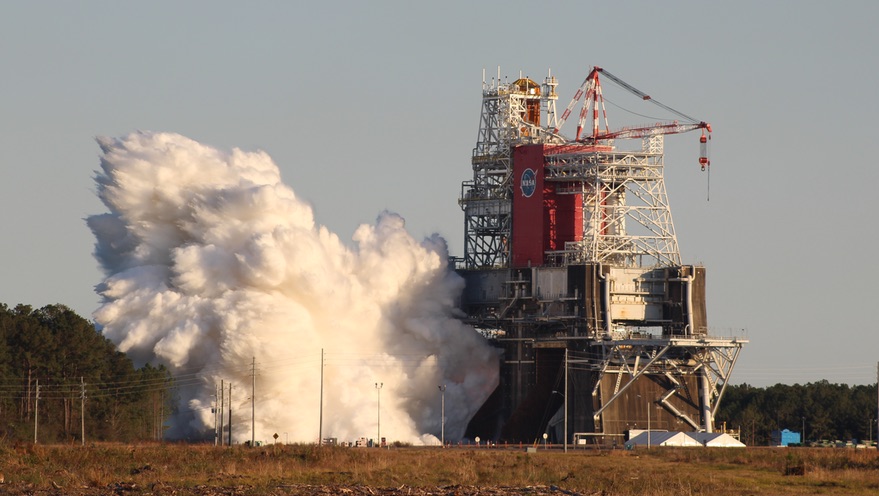BAY ST. LOUIS, Miss. — NASA performed a hotfire test of the core stage of the Space Launch System Jan. 16, but the stage’s four main engines shut down a little more than a minute into a test designed to last eight minutes.
The core stage ignited its four RS-25 engines at 5:27 p.m. Eastern at the B-2 test stand at NASA’s Stennis Space Center here for what was to be a full-duration static-fire test scheduled to last 485 seconds. The test was the last milestone in the Green Run test campaign for the SLS core stage that started a year ago.
However, the engines shut down a little more than one minute into the test. In a feed from the control room broadcast on NASA TV, controllers reported an “MCF”, or main component failure, on one of the four engines, about 45 seconds after ignition. The engines shut down about 20 seconds later.
The cause of the early shutdown was not immediately clear. However, at a Jan. 12 briefing, officials with NASA and Boeing, the SLS prime contractor, said they needed the static fire test to go at least 250 seconds to collect the data they needed.
“If we had an early shutdown for whatever reason, we get all of the engineering data that we need to have high confidence in the vehicle at about 250 seconds,” said John Shannon, vice president and SLS program manager at Boeing, at that briefing. That included throttling the engines from 109% of rated thrust down to 95% and then back to 109% to simulate passing through Max Q, or maximum dynamic pressure, during flight, as well as gimbaling the engines.
NASA and Boeing had expected that a successful test would allow them to send the stage to Florida in February to be integrated with its two five-segment solid rocket boosters, upper stage and Orion spacecraft for the Artemis 1 mission, an uncrewed test flight of the spacecraft. NASA said in the pre-test briefing it still hoped to launch Artemis 1 before the end of the year.
The timeline for a second hotfire test, if needed, is not known. Had NASA scrubbed the test, agency officials said it would have taken about a week to prepare for another attempt in order to replenish propellants and other consumables used in the test.
